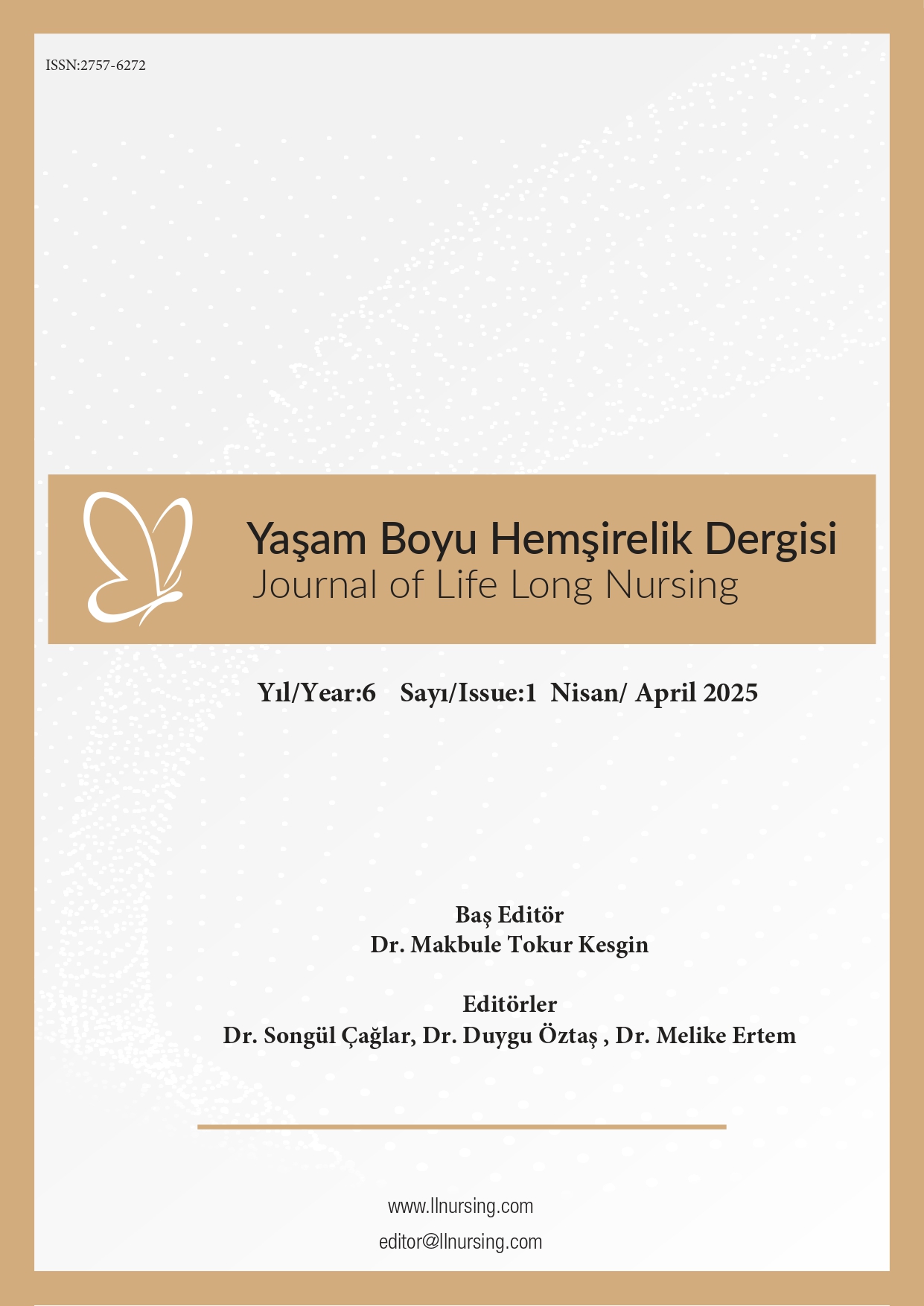Author :
Abstract
|
Amaç: Araştırma diyabetik ayak tanısıyla ampütasyon olan hastaların taburculuk sonrası erken dönemde deneyimlerini belirlemek amacıyla yapılmıştır. Yöntem: Bu araştırma anlatı yöntemi kullanılarak gerçekleştirilmiş nitel bir araştırmadır. Verilerin toplanmasında görüşme tekniği kullanılmıştır. Görüşmeler taburculuk dönemindeki hastalarla araştırmacı arasında telefonla gerçekleştirilmiştir. Araştırmanın evrenini son bir yıl içinde diyabetik ayak ampütasyonu geçiren ve taburcu olan hastalar oluşturmuştur. Veri doygunluğu esas alınarak 6 hasta örneklem olarak alınmıştır. Araştırmada Hasta Soru Formu ve Yarı Yapılandırılmış Görüşme Formu kullanılmıştır. Verilerin değerlendirilmesinde içerik analizi kullanılmıştır. Bulgular: Araştırmaya katılan hastaların yaş ortalaması 55,5 (min=47, maks=64) olup tüm hastalar diz altı diyabetik ayak ampütasyonu geçirmiştir. Yapılan görüşmelerden elde edilen verilerin analizi sonucu toplamda beş adet tema belirlenmiştir. Bu temalar; fiziksel yetersizlik, başetmede zorlanma, başetmede desteklenen durumlar, değişim ve ağrıdır. Sonuç: Ampütasyon olan hastalar fiziksel olarak iş ve sosyal hayatlarında kendilerini yetersiz bulmaktadır. Bu süreçte başetmeyi zorlayan ve destekleyen durumlar saptanmıştır. |
Keywords
Abstract
|
Purpose: The research was conducted to determine the experiences of patients who had amputation due to diabetic foot diagnosis in the early period after discharge. Method: This research is a qualitative research conducted using the narrative method. Interview technique was used to collect data. Interviews were conducted by telephone between the patients at discharge and the researcher. The population of the study consisted of patients who had diabetic foot amputation and were discharged within the last year. Based on data saturation, 6 patients were taken as a sample. Patient Questionnaire and Semi-Structured Interview Form were used in the research. Content analysis was used to evaluate the data. Results: The average age of the patients participating in the study was 55.5 (min = 47, max = 64) and all patients had below-knee diabetic foot amputation. As a result of the analysis of the data obtained from the interviews, five themes in total were determined. These themes; physical disability, difficulty in coping, situations supported in coping, change and pain. Conclusion: Patients with amputation find themselves physically inadequate in their work and social lives. In this process, there are situations that challenge and support coping. |





